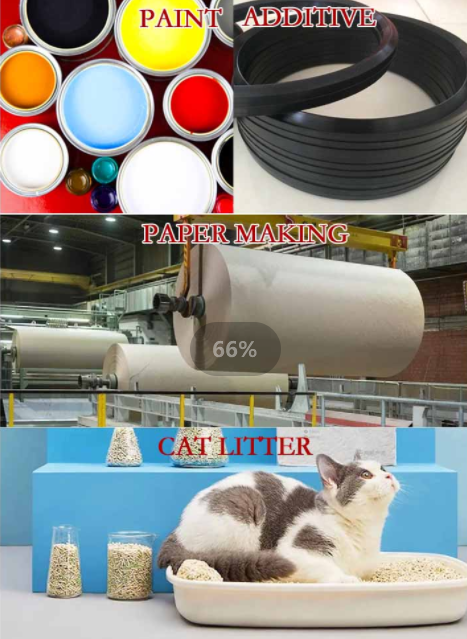
silica fume and fly ash in concrete factories
The Role of Silica Fume and Fly Ash in Concrete Production
In recent years, sustainable construction practices have become a cornerstone of modern engineering, pushing the boundaries of traditional concrete production. Among the many materials being utilized to enhance the performance and sustainability of concrete, silica fume and fly ash have gained significant attention for their beneficial properties. This article explores the role of these two materials in concrete factories, highlighting their advantages, applications, and contributions to the concrete industry.
What are Silica Fume and Fly Ash?
Silica fume, also known as micro-silica, is a byproduct of the production of silicon and ferrosilicon alloys. This ultra-fine powder consists primarily of silicon dioxide (SiO2) and possesses a particle size that is about 100 times finer than that of Portland cement. Due to its high pozzolanic properties, silica fume reacts with the calcium hydroxide produced during cement hydration to form additional cementitious compounds, significantly enhancing the strength and durability of concrete.
Fly ash, on the other hand, is a byproduct of burning pulverized coal in electric power plants. It primarily contains spherical particles that can improve the workability and mechanical properties of concrete. Fly ash is classified into two types Class F and Class C, with Class F derived from anthracite or bituminous coal and Class C from sub-bituminous coal or lignite. Both types are rich in silica and alumina, making them effective pozzolans that contribute to concrete performance.
Advantages of Silica Fume and Fly Ash in Concrete
The inclusion of silica fume and fly ash in concrete mixtures offers numerous advantages that enhance its overall performance.
1. Improved Strength and Durability The addition of silica fume significantly increases concrete's compressive and tensile strength. It also enhances the durability of concrete structures by reducing permeability, which can protect against aggressive environmental factors such as chloride ingress and sulfate attack. Fly ash further contributes to strength, particularly in the long term, as it continues to react and develop strength over time.
silica fume and fly ash in concrete factories

2. Workability Fly ash improves the workability of concrete through its spherical particle shape, which reduces water demand and enhances flowability. This factor is crucial for complicated casting or when using various molds.
3. Sustainability Both materials are industrial byproducts, which means their use in concrete not only recycles waste but also reduces the demand for natural resources. Substituting traditional Portland cement with silica fume and fly ash can result in a lower carbon footprint for concrete production, contributing to greener construction practices.
4. Resistance to Heat and Shrinkage Silica fume helps in controlling thermal cracking in massive concrete structures, as it has lower heat generation during the hydration process. Fly ash also minimizes cracking due to its relatively low heat of hydration compared to conventional cements.
Applications in Concrete Factories
Concrete factories are increasingly incorporating silica fume and fly ash into their production processes. These materials can be used in various applications, including
- High-Performance Concrete (HPC) Both materials are favored in the production of HPC, which requires superior strength, durability, and resistance to environmental factors. - Self-Consolidating Concrete (SCC) SCC mixtures benefit from the flowability provided by fly ash, allowing them to fill complex molds without the need for mechanical vibration. - Repair and Maintenance Silica fume-enhanced concrete is often used in repair applications where high strength and durability are necessary.
Conclusion
The integration of silica fume and fly ash into concrete production offers numerous benefits, including enhanced strength, durability, and sustainability. As the construction industry continues to embrace eco-friendly practices, the utilization of these materials in concrete factories represents a significant stride toward more sustainable and high-performing concrete solutions. By leveraging the unique properties of silica fume and fly ash, the concrete industry can meet the growing demands for resilient structures while minimizing environmental impact, paving the way for a more sustainable future in construction.
Share
-
Premium Resin Coated Sand - High Heat Resistance CastingNewsJul.31,2025
-
High Quality Silicon Carbide Grit for Abrasive ApplicationsNewsJul.30,2025
-
High-Quality Ceramsite for Plants & Gardening | Lightweight PebblesNewsJul.29,2025
-
Premium Burgundy Glass Marbles for Vases & Shooter GamesNewsJul.29,2025
-
High Purity Quartz Sand for Industrial and Ground ApplicationsNewsJul.29,2025
-
High-Quality Barite Powder for Drilling & Industrial UseNewsJul.29,2025






